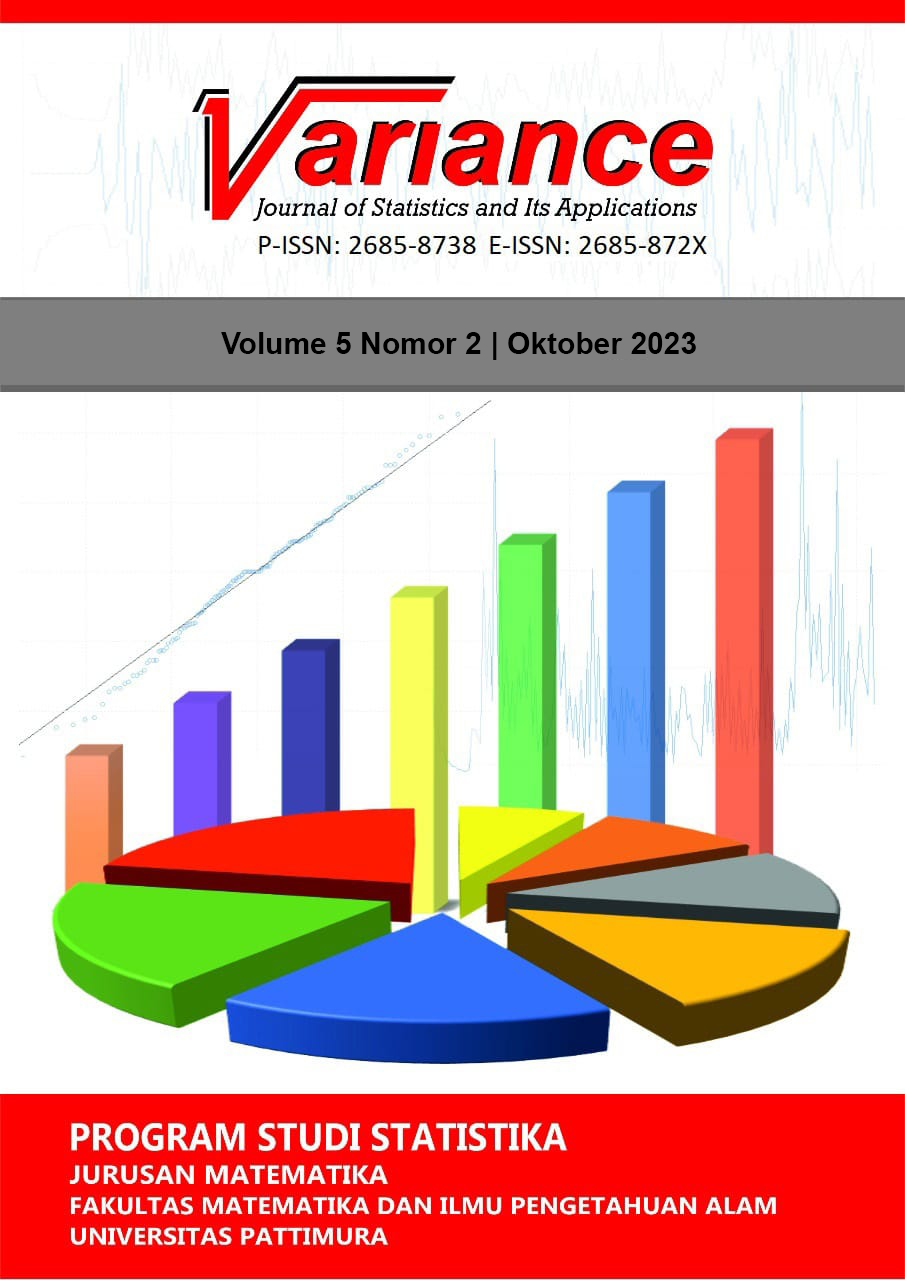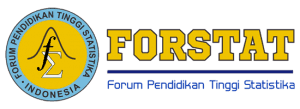MODEL GABUNGAN (ANSAMBEL) SARIMA DAN JARINGAN SARAF TIRUAN UNTUK PERAMALAN BEBAN LISTRIK
Abstract
This study aims to investigate the efficacy of employing artificial neural networks in conjunction with a seasonal autoregressive integrated moving average (SARIMA) ensemble for forecasting electrical load. The SARIMA ensemble comprises members generated by varying autoregressive orders or moving averages. Subsequently, these SARIMA ensemble members are integrated using artificial neural networks. The datasets encompass monthly electrical load data pertaining to households, businesses, industries, and the public, spanning from January 2016 to December 2020. The findings demonstrate that across various categories, SARIMA ensemble-based artificial neural networks demonstrated superior predictive performance compared to alternative models. Future research endeavors should focus on exploring diverse methodologies for both creating and amalgamating ensemble members.
Downloads
References
E. Chodakowska, J. Nazarko, and Ł. Nazarko, “Arima models in electrical load forecasting and their robustness to noise,” Energies, vol. 14, no. 23, 2021, doi: 10.3390/en14237952.
M. Silfiani, H. Aprillia, and Y. Fitriani, “Comparing Various Combined Techniques at Seasonal Autoregressive Integrated Moving Average (SARIMA) for Electrical Load Forecasting,” in 2023 International Seminar on Intelligent Technology and Its Applications (ISITIA), Jul. 2023, pp. 376–381. doi: 10.1109/ISITIA59021.2023.10221130.
K. Chapagain, S. Kittipiyakul, and P. Kulthanavit, “Short-term electricity demand forecasting: Impact analysis of temperature for Thailand,” Energies, vol. 13, no. 10, pp. 1–29, 2020, doi: 10.3390/en13102498.
E. Yukseltan, A. Yucekaya, and A. H. Bilge, “Forecasting electricity demand for Turkey: Modeling periodic variations and demand segregation,” Appl. Energy, vol. 193, pp. 287–296, 2017, doi: 10.1016/j.apenergy.2017.02.054.
M. Al Mamun and K. Nagasaka, “Artificial neural networks applied to long-term electricity demand forecasting,” Proc. - HIS’04 4th Int. Conf. Hybrid Intell. Syst., pp. 204–209, 2005, doi: 10.1109/ichis.2004.27.
M. H. M. R. S. Dilhani and C. Jeenanunta, “Daily electric load forecasting: Case of Thailand,” 7th Int. Conf. Inf. Commun. Technol. Embed. Syst. 2016, IC-ICTES 2016, vol. 2016, pp. 25–29, 2016, doi: 10.1109/ICTEmSys.2016.7467116.
Y. J. Chang, S. H. Wang, and H. Y. Sun, “Research of short-term load forecasting algorithm based on wavelet analysis and Radial Basis Function Neural Network,” PEITS 2009 - 2009 2nd Conf. Power Electron. Intell. Transp. Syst., vol. 1, pp. 81–84, 2009, doi: 10.1109/PEITS.2009.5406961.
J. Bedi and D. Toshniwal, “Deep learning framework to forecast electricity demand,” Appl. Energy, vol. 238, no. January, pp. 1312–1326, 2019, doi: 10.1016/j.apenergy.2019.01.113.
M. Silfiani, F. N. Hayati, D. Nurlaily, and I. Fitria, “Household Electrical Load Forecasting: A Hybrid of Linear Models and Radial Basis Function Neural Network,” 2021. doi: 10.1109/ICAMIMIA54022.2021.9807693.
A. Kumar Dubey, A. Kumar, V. García-Díaz, A. Kumar Sharma, and K. Kanhaiya, “Study and analysis of SARIMA and LSTM in forecasting time series data,” Sustain. Energy Technol. Assessments, vol. 47, no. July, p. 101474, 2021, doi: 10.1016/j.seta.2021.101474.
U. Gunter, “Improving Hotel Room Demand Forecasts for Vienna across Hotel Classes and Forecast Horizons: Single Models and Combination Techniques Based on Encompassing Tests,” Forecasting, vol. 3, no. 4, pp. 884–919, 2021, doi: 10.3390/forecast3040054.
U. Gunter, I. Önder, and E. Smeral, “Are Combined Tourism Forecasts Better at Minimizing Forecasting Errors?,” Forecasting, vol. 2, no. 3, pp. 211–229, Jun. 2020, doi: 10.3390/forecast2030012.
C. Lu, J. Liang, W. Jiang, J. Teng, and C. Wu, “High-resolution probabilistic load forecasting: A learning ensemble approach,” J. Franklin Inst., vol. 360, no. 6, pp. 4272–4296, 2023, doi: 10.1016/j.jfranklin.2023.02.010.
A. Malki, E. S. Atlam, A. E. Hassanien, A. Ewis, G. Dagnew, and I. Gad, “SARIMA model-based forecasting required number of COVID-19 vaccines globally and empirical analysis of peoples’ view towards the vaccines,” Alexandria Eng. J., vol. 61, no. 12, pp. 12091–12110, 2022, doi: 10.1016/j.aej.2022.05.051.
C. A. Mendoza, J. G. Brida, and N. Garrido, “The impact of earthquakes on Chile’s international tourism demand,” J. Policy Res. Tour. Leis. Events, vol. 4, no. 1, pp. 48–60, 2012, doi: 10.1080/19407963.2011.636923.
Y. W. Chang and M. Y. Liao, “A seasonal ARIMA model of tourism forecasting: The case of Taiwan,” Asia Pacific J. Tour. Res., vol. 15, no. 2, pp. 215–221, 2010, doi: 10.1080/10941661003630001.
N. An, W. Zhao, J. Wang, D. Shang, and E. Zhao, “Using multi-output feedforward neural network with empirical mode decomposition based signal filtering for electricity demand forecasting,” Energy, vol. 49, no. 1, pp. 279–288, 2013, doi: 10.1016/j.energy.2012.10.035.
Copyright (c) 2023 VARIANCE: Journal of Statistics and Its Applications

This work is licensed under a Creative Commons Attribution-NonCommercial-ShareAlike 4.0 International License.



 Editorial Team
Editorial Team
 Peer Review Process
Peer Review Process Focus & Scope
Focus & Scope Open Acces Policy
Open Acces Policy Privacy Statement
Privacy Statement Author Guidelines
Author Guidelines Publication Ethics
Publication Ethics Publication Fees
Publication Fees Copyrigth Notice
Copyrigth Notice Plagiarism Screening
Plagiarism Screening Digital Archiving
Digital Archiving





